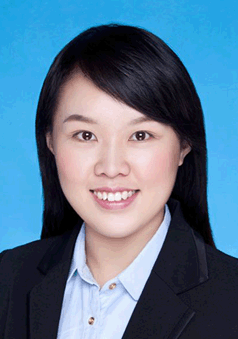| Table of Contents |  |
|
Case Report
| ||||||
| Collision injury-induced superior semicircular canal fracture and therapeutic effect of round and oval window reinforcements | ||||||
| Jing Zou1,2, Guiliang Zheng1, Rishunzi Peng1, Yingna Gao1, Shiyue Chen3, Hongliang Zheng1 | ||||||
|
1Department of Otolaryngology-Head and Neck Surgery, Center for Otolaryngology-Head & Neck Surgery of Chinese PLA, Changhai Hospital, Second Military Medical University, Shanghai, China.
2Hearing and Balance Research Unit, Field of Oto-laryngology, School of Medicine, University of Tampere, Tampere, Finland. 3Department of Radiology, National Key Discipline, Changhai Hospital, Second Military Medical University, Shanghai, China. | ||||||
| ||||||
|
[HTML Abstract]
[PDF Full Text]
[Print This Article]
[Similar article in Pumed] [Similar article in Google Scholar] |
| How to cite this article |
| Zou J, Zheng G, Peng R, Gao Y, Chen S, Zheng H. Collision injury-induced superior semicircular canal fracture and therapeutic effect of round and oval window reinforcements. Edorium J Otolaryngol 2014;1:11–17. |
|
Abstract
|
|
Introduction:
A patient demonstrated sound induced vertigo and hearing loss among others as a result of superior semicircular canal (SSC) fracture was successfully treated using a minimally invasive method of round and oval window reinforcements.
Case Report: We report a case demonstrating SSC dehiscence syndrome among other symptoms that developed after a car accident. Vertigo was induced by pure tone at 1.5 kHz. An audiogram demonstrated a 10–15 dB air-bone gap at low frequencies and sensorineural hearing loss at frequencies higher than 4 kHz. Cervical vestibular evoked myogenic potential was absent on the left side and was successfully induced on the right side. An magnetic resonance imaging (MRI) using a 3D FIESTA sequence demonstrated an abnormal gap between brain and membranous SSC, and a high-resolution computed tomography (CT) scan with reconstruction of the panel of SSC confirmed the fractures on the SSC wall. The symptoms were well controlled by round and oval window reinforcements. A fibrous connection between the caput stapedis and the upper structures was identified, and the ossicular chain was reconstructed using a partial ossicular replacement prosthesis. More than 20 dB improvement was obtained in bone conduction at 4 kHz. Conclusion: Collision injury-induced SSC wall fracture might display symptoms that are similar to SSC dehiscence syndrome. A combination of magnetic resonance imaging and high resolution CT with reconstruction of the panel of the potentially injured semicircular canal is recommended to identify the lesion site. Round and oval window reinforcements proved to be an efficient management technique for collision injury-induced SSC dehiscence syndrome. | |
|
Keywords:
Imaging, Semicircular canal dehiscence, Surgery, Trauma, Vertigo
| |
|
[HTML Abstract]
[PDF Full Text]
|
|
Author Contributions
Jing Zou – Substantial contributions to conception and design, Acquisition of data, Analysis and interpretation of data, Drafting the article, Revising it critically for important intellectual content, Final approval of the version to be published Guiliang Zheng – Acquisition of data, Analysis and interpretation of data, Revising it critically for important intellectual content, Final approval of the version to be published Rishunzi Peng – Acquisition of data, Analysis and interpretation of data, Revising it critically for important intellectual content, Final approval of the version to be published Yingna Gao – Acquisition of data, Analysis and interpretation of data, Revising it critically for important intellectual content, Final approval of the version to be published Shiyue Chen – Acquisition of data, Analysis and interpretation of data, Revising it critically for important intellectual content, Final approval of the version to be published Hongliang Zheng – Acquisition of data, Analysis and interpretation of data, Revising it critically for important intellectual content, Final approval of the version to be published |
|
Guarantor of submission
The corresponding author is the guarantor of submission. |
|
Source of support
None |
|
Conflict of interest
Authors declare no conflict of interest. |
|
Copyright
© 2014 Jing Zou et al. This article is distributed under the terms of Creative Commons Attribution License which permits unrestricted use, distribution and reproduction in any medium provided the original author(s) and original publisher are properly credited. Please see the copyright policy on the journal website for more information. |
|
|
|
About The Authors
| |||
| |||
| |||
| |||
| |||
| |||
| |||






